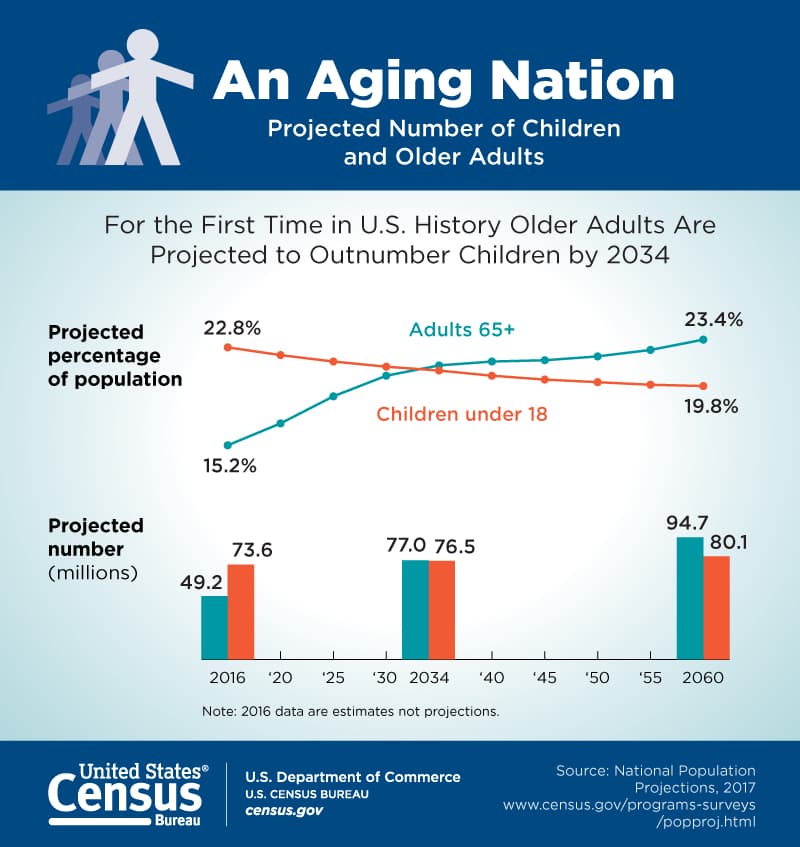US Population Growth to Be Driven by Over 65s, Younger Cohorts Decline

Demographic projections for the United States indicate a significant shift in population dynamics, with future growth predominantly stemming from individuals aged 65 and older. Concurrently, the number of Americans under the age of 25 has already reached its peak and is projected to decline. This trend highlights a rapidly aging population and has substantial implications for the nation's economy and social structures.
According to a recent social media post by John Arnold, > "All of the population growth in the US from here on comes from those aged 65+. Meanwhile, the number of Americans under 25 has already peaked." This statement aligns with analyses from various reputable sources. The Congressional Budget Office (CBO) projects that the population aged 65 or older will grow more quickly than younger groups between 2025 and 2055, leading to an increase in the average age of the population.
The CBO's "Demographic Outlook: 2025 to 2055" further details that the number of people aged 24 or younger is expected to decline in their projections. This is primarily attributed to persistently low fertility rates, which are projected to remain below the replacement level of 2.1 births per woman. In 2023, the provisional total fertility rate in the US was a historic low of 1.62 births per woman.
Net international migration is increasingly becoming a crucial factor in overall population growth. The CBO states that without immigration, the U.S. population would begin to shrink after 2033. Between 2023 and 2024, nearly 84% of the U.S. population growth was attributed to international migration, helping to offset the effects of declining birth rates.
This demographic shift poses challenges and opportunities, particularly concerning the workforce, social security, and healthcare systems. The ratio of people aged 25 to 64 to those 65 or older is projected to decline from 2.8 to 1 in 2025 to 2.2 to 1 by 2055, indicating a shrinking proportion of working-age individuals supporting a growing elderly population.